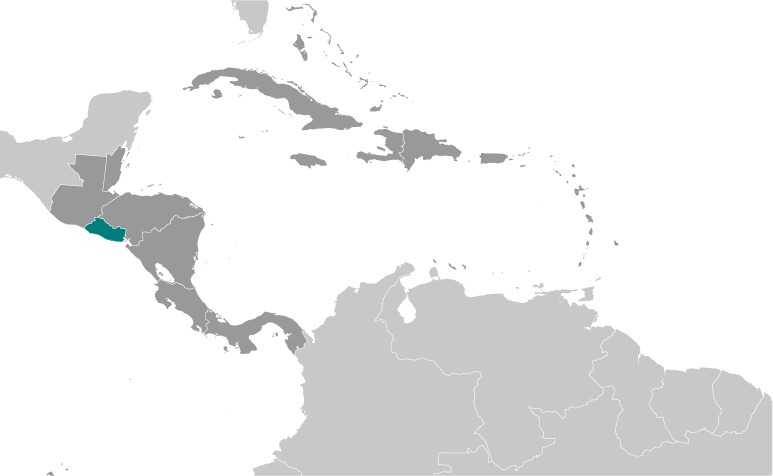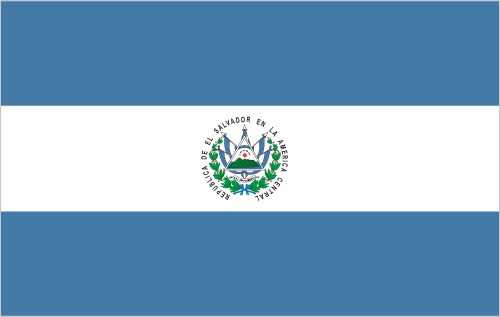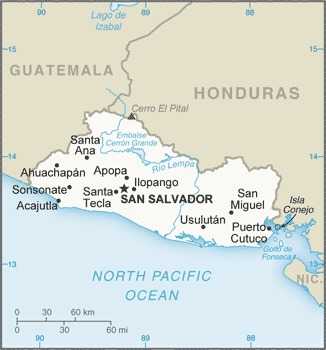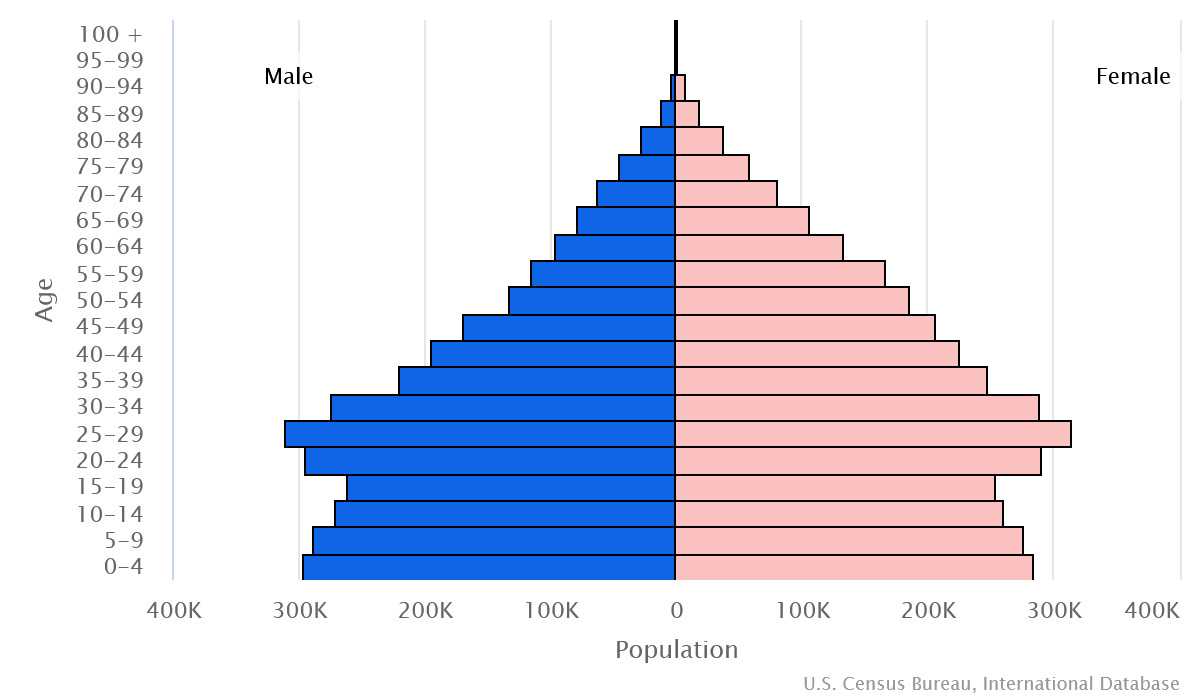Introduction
Background
El Salvador achieved independence from Spain in 1821 and from the Central American Federation in 1839. A 12-year civil war was brought to a close in 1992 when the government and leftist rebels signed a treaty that provided for military and political reforms.
Geography
Area
total : 21,041 sq km
land: 20,721 sq km
water: 320 sq km
Climate
tropical; rainy season (May to October); dry season (November to April); tropical on coast; temperate in uplands
Natural resources
hydropower, geothermal power, petroleum, arable land
People and Society
Population
total: 6,628,702
Ethnic groups
Mestizo 86.3%, White 12.7%, Indigenous 0.2% (includes Lenca, Kakawira, Nahua-Pipil), Black 0.1%, other 0.6% (2007 est.)
Languages
Spanish (official), Nawat (among some Indigenous)
Religions
Roman Catholic 43.9%, Protestant 39.6% (Evangelical - unspecified 38.2%, Evangelical - Methodist 1.3%, Evangelical - Baptist 0.1%), none 16.3%, unspecified 0.2% (2023 est.)
Population growth rate
0.34% (2024 est.)
Government
Government type
presidential republic
Capital
name: San Salvador
Executive branch
chief of state: President Nayib Armando BUKELE Ortez (since 1 June 2019)
head of government: President Nayib Armando BUKELE Ortez (since 1 June 2019)
Legislative branch
description: unicameral Legislative Assembly or Asamblea Legislativa (84 seats; members directly elected in multi-seat constituencies and a single nationwide constituency by open-list proportional representation vote to serve 3-year terms)
Economy
Economic overview
growth-challenged Central American economy buttressed via remittances; dense labor force; fairly aggressive COVID-19 stimulus plan; new and lower banking reserve requirements; earthquake, tropical storm, and crime disruptions; widespread corruption
Real GDP (purchasing power parity)
$71.957 billion (2023 est.)
$69.516 billion (2022 est.)
$67.623 billion (2021 est.)
Real GDP per capita
$11,300 (2023 est.)
$11,000 (2022 est.)
$10,700 (2021 est.)
Agricultural products
sugarcane, maize, milk, chicken, beans, sorghum, coconuts, oranges, eggs, yautia (2022)
Industries
food processing, beverages, petroleum, chemicals, fertilizer, textiles, furniture, light metals
Exports
$10.629 billion (2023 est.)
$10.164 billion (2022 est.)
$8.351 billion (2021 est.)
Exports - partners
US 38%, Guatemala 16%, Honduras 16%, Nicaragua 7%, Costa Rica 4% (2022)
Exports - commodities
garments, plastic products, electrical capacitors, fabric, raw sugar (2022)
Imports
$17.032 billion (2023 est.)
$18.184 billion (2022 est.)
$15.483 billion (2021 est.)
Imports - partners
US 30%, China 16%, Guatemala 12%, Mexico 8%, Honduras 6% (2022)
Imports - commodities
refined petroleum, garments, natural gas, plastic products, plastics (2022)
Page last updated: Wednesday, July 24, 2024




